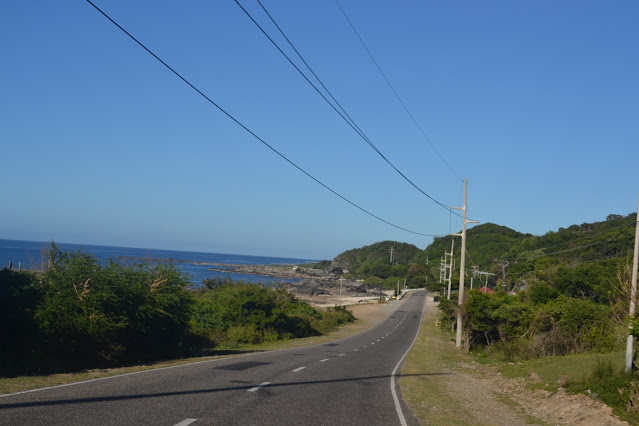Location: Municipality of Bangui, Ilocos Norte, Philippines
Updated: November 2019
Bangui Wind Farm has 20 wind turbines erected in a single row along nine-kilometer stretch of shoreline located along Bangui Bay where Bangui is also one of the municipalities of Ilocos Norte. I was amazed to know that we have this kind in the Philippines.

These windmills face the sea from where the wind blows towards the land. Its location along the shore is optimal in removing windbreaks and has a terrain roughness of 0. The site is free of any trees and vegetation, and stretches approximately 9 kilometres (5.6 mi) long and 100 metres (330 ft) wide. The area is undeveloped and uninhabited making it ideal as a site and poses no threat to the environment.

The wind mills use 20 units of 70-metre (230 ft) high Vestas V82 1.65 MW wind turbines. These 20 units were constructed in two separate phases of which the first 15 units were finished and inaugurated on June 18, 2005 under the Phase I project as developed by a Danish firm, Northwind Power Development Corporation and the units are similar to those already found in Denmark. The other 5 units were completed in June 2008.
The access road going to Bangui windmills
The open accommodation platform connected to the restaurant

Prior to the finalization of making this project a reality, the National Renewable Energy Laboratory (NREL) in 1996 has conducted a wind resource analysis and mapping study. It concluded that various areas in the Philippines are ideal for wind power installation. These areas include Bangui and Burgos towns in Ilocos Norte, Batanes and Babuyan Islands, which are north of Luzon and the higher interior terrain of Mindoro, Samar, Leyte, Panay, Negros, Cebu, Palawan and Eastern Mindanao.

This project is really a big help to the region as they are its immediate beneficiary owing to a cheaper supply of electricity. This is considering that each capable of producing electricity up to a maximum capacity of 1.65 MW, for a total of 24.75 MW. The 20 on-shore turbines are spaced 326 metres (1,070 ft) apart, each 70 metres (230 ft) high, with 41 metres (135 ft) long blades, with a rotor diameter of 82 metres (269 ft) and a wind swept area of 5,281 square metres (56,840 sq ft).

The beach alone is not ideal for swimming for its strong winds also cause big waves. Just as a sort of advice, tourists should keep off the sea water as its waves are strong enough to pull human bodies even those with big frame. Unofficial reports revealed two who died because they drawn by the strong current of the waves. We also have this experience during our tour when our 6-year old girl joined this jump shots. Unfortunately, when she jumped she landed to the rushing waves and she was drawn to the deeper part of the shore and so we pulled her ashore and we really felt how strong the current as we were almost carried by it despite our combined force. The waves are even treacherous, all the while you will see they are not there and without any warning, they would come rushing to take you away.
HOW TO GET THERE
This tour package is a part of my Ilocos Sur - Ilocos Norte Trip, just refer to my earlier post of Paoay Church for it will be a big help.












































